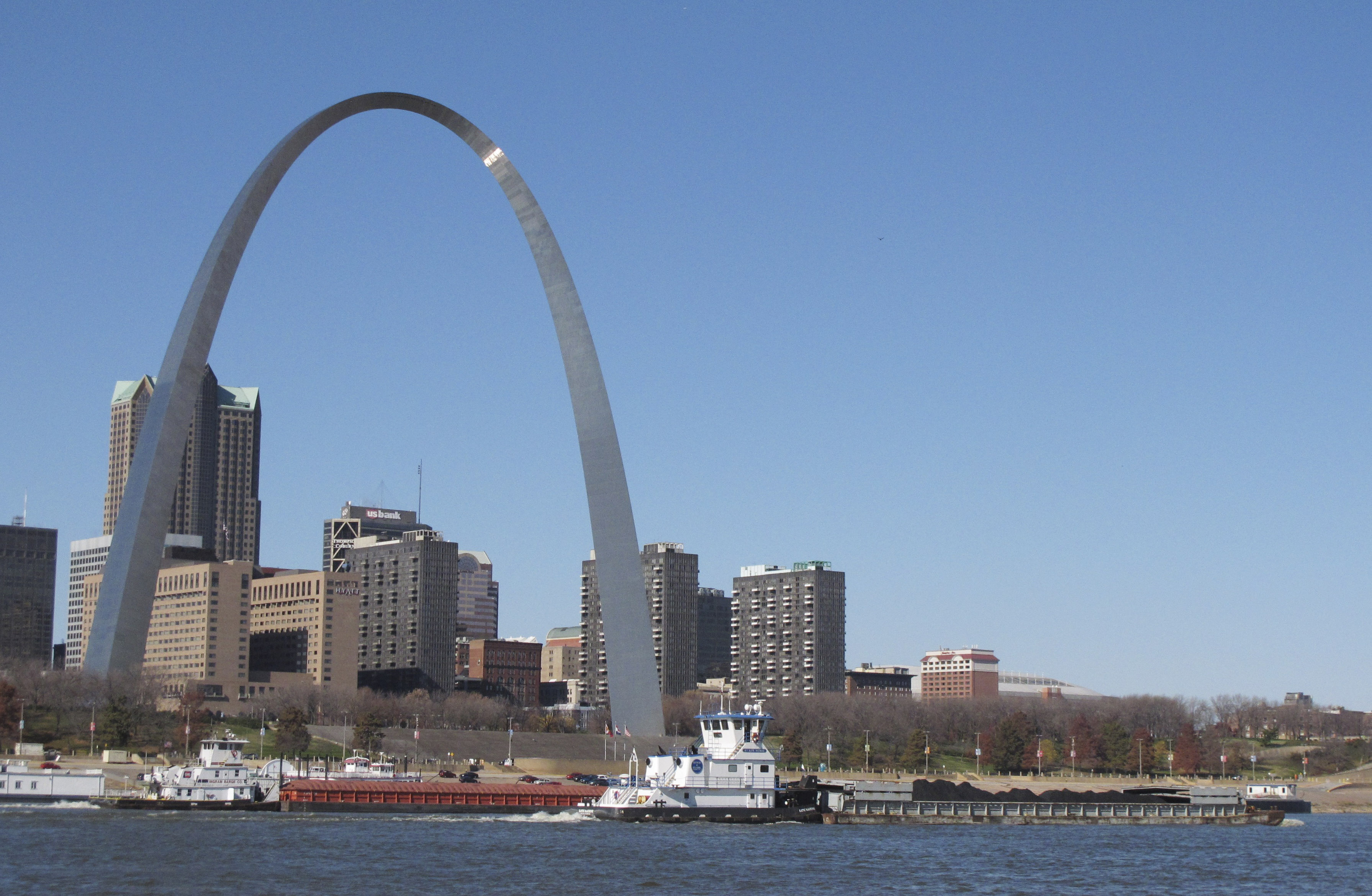By JIM SALTER
Associated Press
ST. LOUIS - The Army Corps of Engineers on Friday began reducing the flow from a Missouri River reservoir, a move expected to worsen low water conditions on the Mississippi River and potentially bring barge traffic to a halt within weeks.
One result of this year's drought, the worst in decades, has been a big drop in water levels on both the Mississippi and Missouri rivers.
The Corps of Engineers office in Omaha, Neb., announced earlier this month plans to reduce the outflow from the Gavins Point Dam near Yankton, S.D. Corps spokeswoman Monique Farmer told The Associated Press that the reduction began as scheduled Friday morning. By late-morning, the flow that had started at 37,500 cubic feet per second had been cut to 35,500 cubic feet per second.
Farmer said plans call for a gradual reduction down to 12,000 cubic feet per second by Dec. 11.
"It's just an extended period of drought, and that forecast is expected to persist into the spring," Farmer said. "We're hoping Mother Nature brings some snow this winter, but we've been told to expect low, stable conditions, that it's probably going to remain dry."
The cut in flow comes despite opposition from the governors of Missouri and Illinois and 15 U.S. senators whose states sit along the Mississippi River. Scott Holste, a spokesman for Missouri Gov. Jay Nixon, said the office never received a reply to a letter Nixon sent Army Assistant Secretary Jo-Ellen Darcy, asking that the corps delay plans to reduce the Missouri River flow.
The Mississippi is nearing historic lows between St. Louis and Cairo, Ill. Barges are already required to carry lighter loads and the middle of the river could be closed to barge traffic if the water level at St. Louis dips below minus 5 feet. It was at minus 0.45 feet Friday.
A zero river reading at St. Louis was established more than a century ago. It's the point at which people at that time thought the river would never drop below.
The National Weather Service forecast for river levels extends only as far as Dec. 6. It calls for the Mississippi River to get to minus 3.7 feet at St. Louis by then. Businesses that ship on the river and their trade groups expect to get to minus 5 feet by around Dec. 10.
Barge operators and those who ship on the Mississippi have warned that stopping barge traffic would risk economic catastrophe for coal, agriculture, petroleum and other interests. Some companies have said they may have to lay off workers if barge traffic is halted for any significant amount of time.
Barges carry 20 percent of the country's coal and more than 60 percent of its grain exports. Other cargo - such as petroleum products, lumber, sand, industrial chemicals and fertilizer - also gets shipped along the Mississippi River.
Trade groups for waterway operators have even asked President Barack Obama to intervene. A message left with the White House on Friday was not returned.
The weather forecast offers little hope. No big storms are in the forecast. Scott Truett of the National Weather Service office in St. Louis said that while the drought has eased in the St. Louis area in recent months, it persists in the upper Mississippi and upper Missouri river basins - the areas that feed water to the mid-Mississippi River region.
"That means less runoff and hence low water levels," Truett said.
The corps has taken several steps to keep the Mississippi open as possible, including increased dredging. It also plans to remove two rock formations in the river in southern Illinois that jut up, potentially scraping the bottoms of barges when water levels are low.
But that work isn't expected to start until February. The letter signed by the 15 senators also asked the corps to expedite the rock removal.
Corps officials in Omaha say the drought already has hurt recreation in the upper Missouri River areas. The low water is exposing Native American artifacts, leaving them prone to looting. And if it persists into spring, hydropower could be impacted.
Corps officials in Omaha say they are bound by the Missouri River Master Manual to act in the best interest of the Missouri River basin, and what happens on the Mississippi is incidental.
